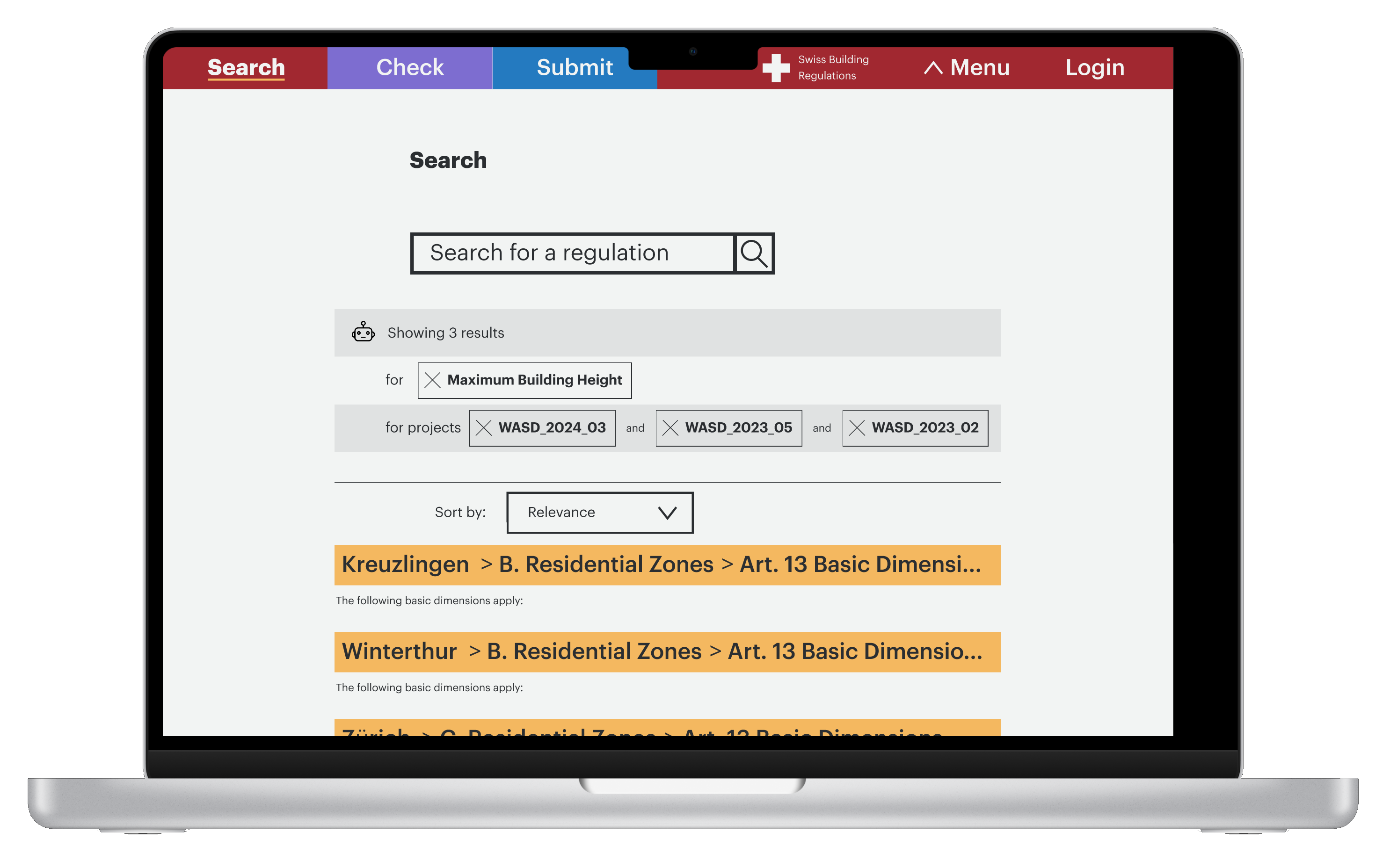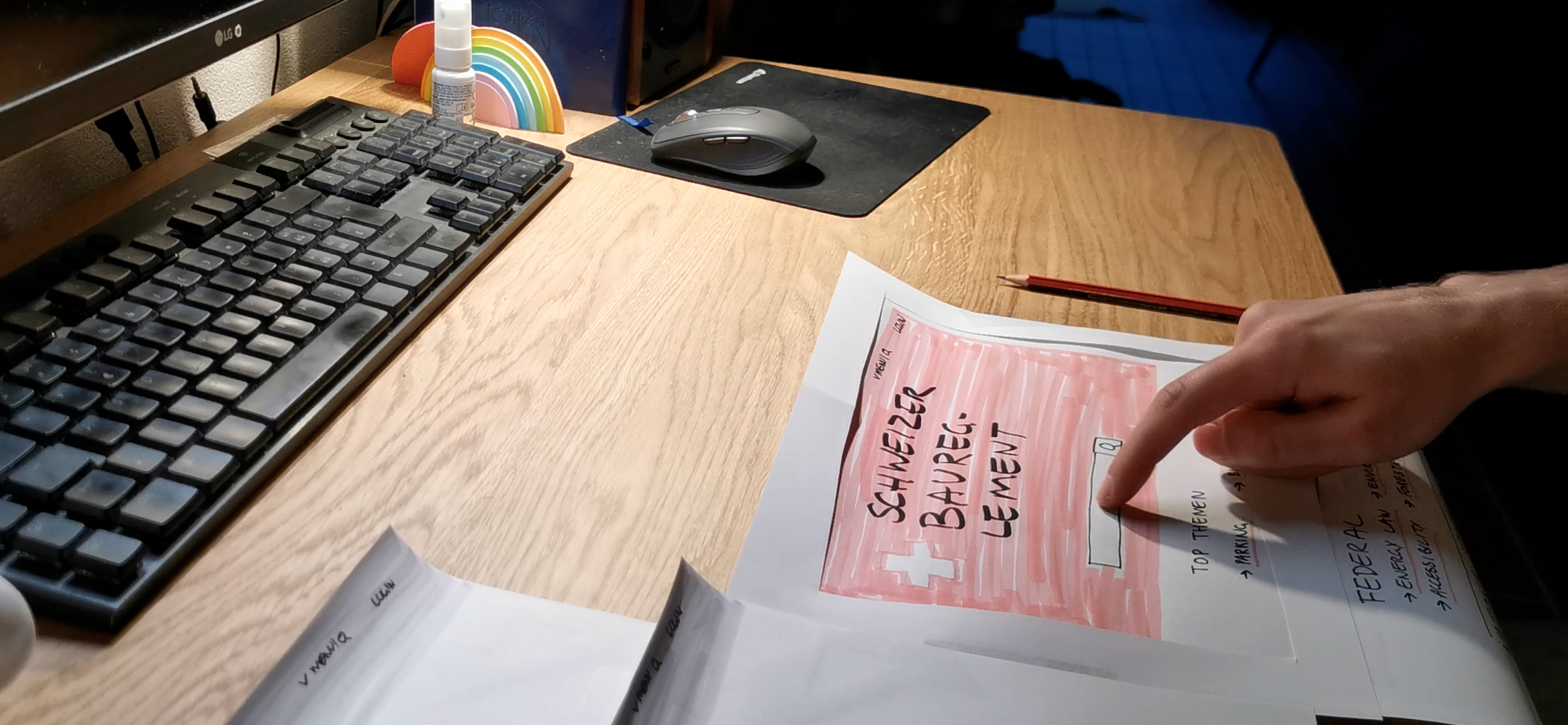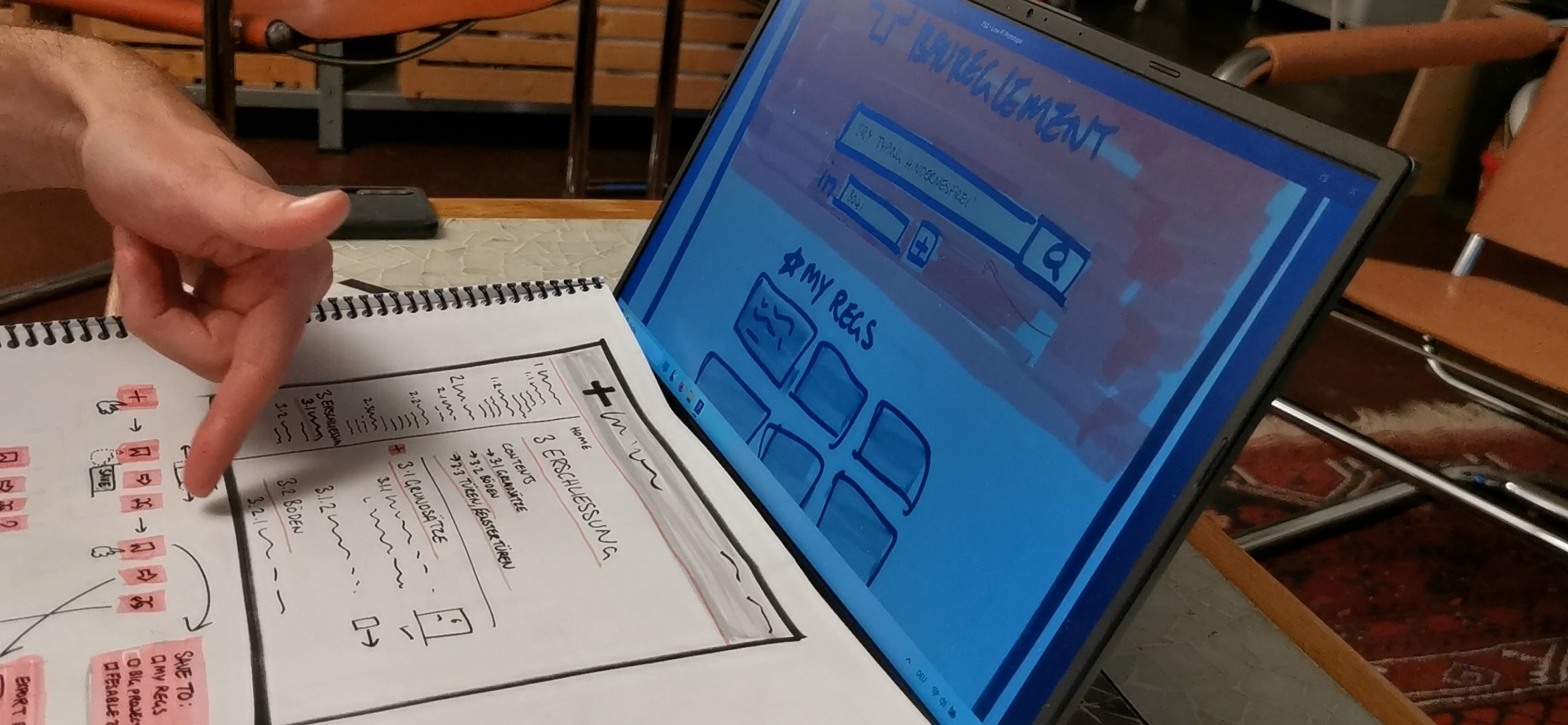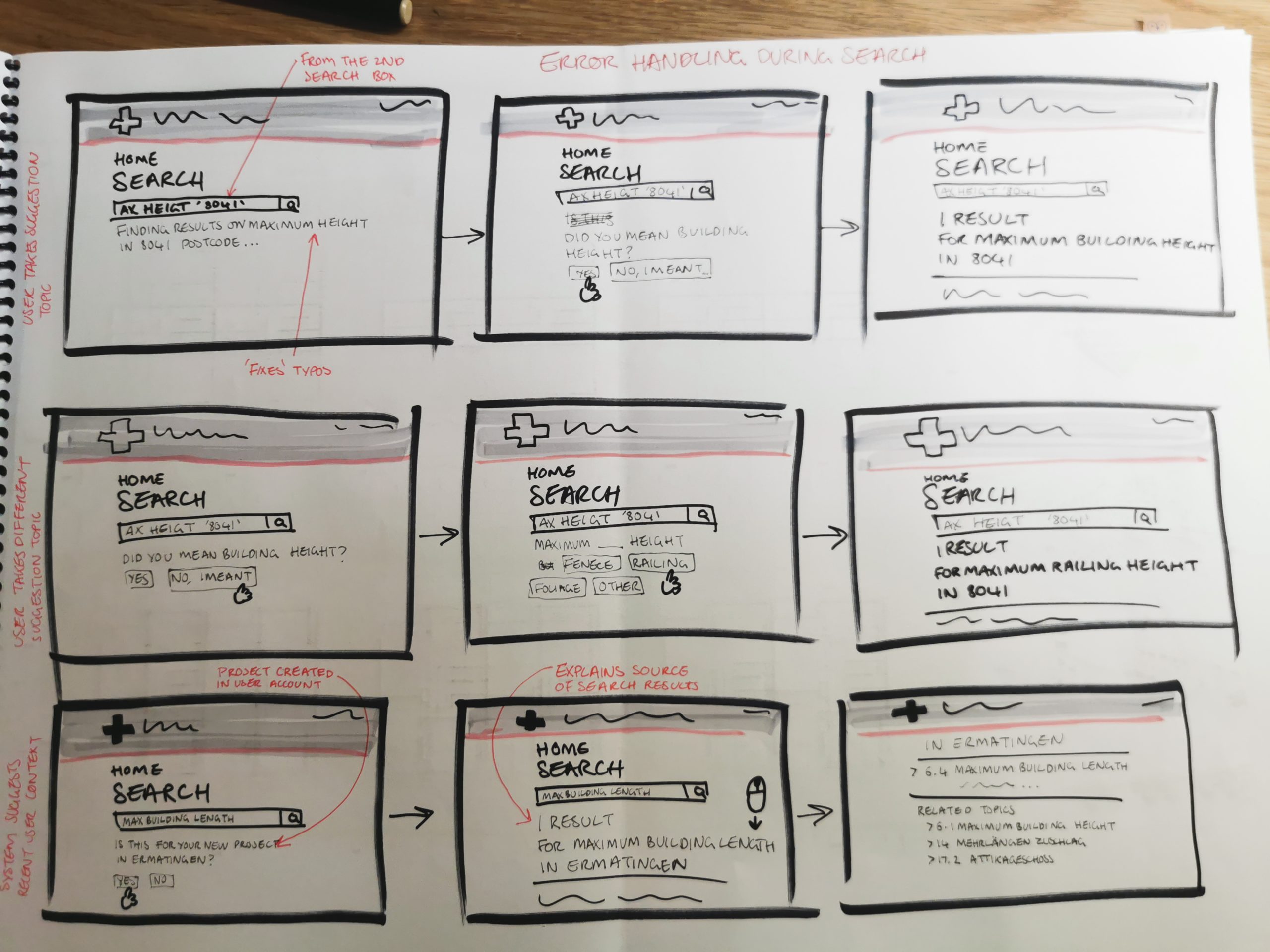Swiss Building Regulations Portal (SBRP)
My role
This was a self-directed research and development project informed by my project proposal. I worked on low- to high-fidelity prototypes, user interviews, surveys, technology acceptance tests and information architecture.
User Interviews, Surveys, Figma, Excel, Photoshop, Premiere Pro
Results
In 12 weeks, I developed a functional, high-fidelity prototype of a platform unifying building regulations based on user interview data.
Read more about the inspiration of my thesis project at the Falmouth University website.
Setting the Scene
Architects and other professionals in the built environment use building regulations to inform their daily work. Making sure a construction project follows regulations means new and renovated buildings reach minimum quality and safety standards.
In the UK, the British Government oversees a set of central regulations with some variations for the individual countries. In Switzerland, each borough and each municipality control their own regulations leading to thousands of unique regulatory documents.
Regulatory documents are normally individual pdfs (or in rare cases, a website) that are hosted by each municipality. As municipalities are extremely varied their websites and processes are very different.
Often, small municipal websites are poorly designed making regulatory pdfs hard to find. Once the user has found the document, many pdfs vary in style, language and lack navigation tools making them very difficult to use.
Taking the Wrong Path
I was very inspired by existing government websites such as the Zürich city council’s general website and the Zürich tax portal. In particular I liked the way GOV.UK built up an understandable search flow to explain to users where their results were coming from.
Suitably inspired, I presented users with a sketched out search flow at my first Wizard of Oz testing.The testing went well until the filters when the users quickly got frustrated with the prototype’s functionality.
Participants stated they would likely not use the filters at all in favour of typing new and more terms into the search bar.
This early testing really challenged my assumptions about what users expect in a post-AI-assistant world. Users stated they expected the system to know what they wanted rather than have to explain themselves.
Based on the user feedback, I adjusted my thinking to shift from a traditional search with manual filters to an intelligent search powered by multiple AI Agents.
Embedding AI Agents through the Prototype
As it was important to users for AI to support all their processes, it was important to me to show the user when that support was happening.
I began designing in small affordances to indicate the presence of AI such as a little robot, and ‘memory updating’ copy.
Core Features
The SBRP has three main features, search, check and submit with the added benefit of user profiles. The main user flow is the search function. The system considers the users current projects and gives them tailored results to avoid keyword searching or endless scrolling.
A key problem highlighted by users was having to search multiple times for the same regulation at different stages of the project. So the user now has the choice to save, export or compare individual regulations.
For more details on the compliance checker and the submimission features, see the final presentation video.
Final technology acceptance testing showed great results in perceived ease of use and perceived usefulness.
All users stated that it would make their day jobs easier and more efficient.
Reflection
I wish I could have done testing with more senior architects who have their own companies and already have a lot of experience with traditional, PDF regulations.
I especially wish I could have tested for trust in the AI system with all users but specifically with senior architects who would be the key decision makers behind companies adopting the SBRP.
I would have also loved to test specifically for cognitive overload in neuro diverse users, particularly new graduates as encountering regulations for the first time is a daunting experience.
Next steps for the project will investigate AI design patterns in more detail. For example, progress indicators, notifications, text explanations and search prompts.














